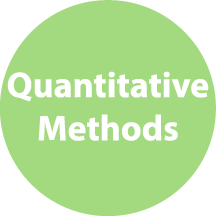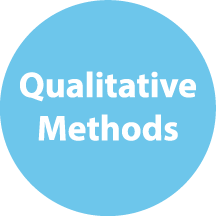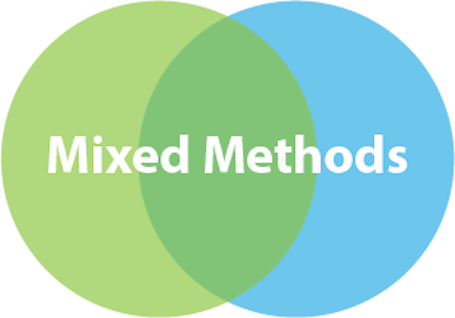Research Methods
This section explains some of the methods that we use in our research. This is not meant to be an exhaustive explanation but an overview of how we approach our research.

Quantitative research involves collecting objective measurements and conducting statistical, mathematical, or numerical analysis of the data. The goal of quantitative research is to understand, describe, and predict the nature of a phenomenon. We use this method to test causal relationships and to generalize results to a population.

Qualitative research involves collecting information from individuals via interviews, surveys, and observation to understand participants’ opinions and experiences about a topic. We use this method to gather in-depth insights into research questions we want to answer. We analyze the rich data by coding (labeling) the data then extracting themes from the coded data.

Mixed methods research uses both quantitative and qualitative data. Mixed methods provide a more complete understanding of the research problem and take advantage of the strengths of each data type.
Human-Centered Design
According to ISO 9241-210:2010(E) “human-centered design is an approach to interactive systems that aims to make systems usable and useful by focusing on the users, their needs and requirements, and by applying human factors/ergonomics, and usability knowledge and techniques. This approach enhances effectiveness and efficiency, improves human well-being, user satisfaction, accessibility and sustainability; and counteracts possible adverse effects of use on human health, safety and performance.”
Iterative Activities
Human Centered Design involves four iterative activities:
-Understanding and specifying the context of use.
-Specifying the user requirements
-Producing design solutions
-Evaluating the design

Principles of the Approach
-The design is based upon an explicit understanding of users, tasks, and environments.
-Users are involved throughout design and development.
-The design is driven and refined by user-centered evaluation.
-The process is iterative.
-The design addresses the whole user experience.
-The design team includes multi-disciplinary skills and perspectives.
Principles of Design
-Suitability for the task
-Self-descriptiveness
-Conformity with user expectations
-Suitability for learning
-Controllability
-Error tolerance
-Suitability for individualization
Human Centered Research and Design Tools
Below is a list of some of the possible techniques used in iteration throughout the human centered design process.
Card Sorting
A categorization exercise in which participants divide concepts into different groups based on their understanding of those concepts.
Cognitive Walkthrough
An evaluation method in which people work through a set of representative tasks and ask questions about the task as they go.
Comparative Analysis
A detailed review of existing experiences provided either by direct competitors or by related agencies or services.
Contextual Inquiry
The product team unobtrusively observes participants at work, with their permission, then asks questions.
Heuristic Evaluations and Expert Reviews
An evaluation method to quickly identify common design problems that make websites hard to use without conducting more involved user research.
Journey Mapping
A visualization of the major interactions shaping a user’s experience of a product or service.
Personas
User archetypes based on conversations with real people.
Prototyping
A rudimentary version, either static or functional, of something that exhibits realistic form and function.
Stakeholder/User Interviews
A wide-spanning set of semi-structured interviews with living experts who have an interest in a project’s success, including stakeholders and users.
Storyboarding
A visual sequence of a specific use case or scenario, coupled with a narrative.
Surveys
A survey is a method of gathering information using relevant questions from a sample of people with the aim of understanding populations as a whole. Surveys provide a critical source of data and insights.
Task Analysis
A step-by-step analysis of how a user will interact with a system in order to reach a goal. This analysis is documented in a diagram that traces a user’s possible paths through sequences of tasks and decision points in pursuit of their goal. The tasks and decision points should represent steps taken by the user, as well as steps taken by the system.
Usability Testing
Observing users as they attempt to use a product or service while completing specific tasks.
Wireframing
A simple visual representation of a product or service interface.

